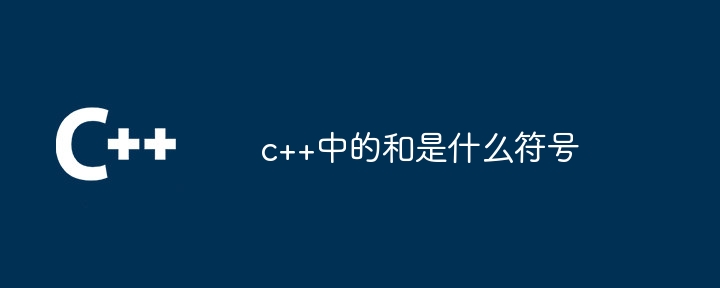
In C, the plus sign ( ) is used to perform addition operations and can be applied to numbers, strings, and custom data types: Numeric addition: Add two or more numbers. String concatenation: Concatenate two or more strings together. Addition of custom data types: After overloading the plus sign, objects of custom data types can be added.

The plus sign ( ) in C
The plus sign ( ) in C is an operator used to perform addition operations. It can be applied to numbers, strings, and custom data types.
Applied to numbers
When applied to numbers, the plus sign adds two or more numbers and returns the result. For example:
int num1 = 10; int num2 = 5; int sum = num1 + num2; // sum = 15
applied to string
When applied to a string, the plus sign concatenates two or more strings together and returns the concatenated string. For example:
string str1 = "Hello"; string str2 = "World"; string greeting = str1 + str2; // greeting = "HelloWorld"
applies to custom data types
The plus sign can also be overloaded as a custom data type. When overloaded, it allows objects of custom data types to be added in a manner similar to numbers or strings. For example, suppose we have a custom type called Point that represents a 2D point:
class Point {
public:
int x;
int y;
Point operator+(const Point& other) {
return {x + other.x, y + other.y};
}
}; Now we can add Point objects like this:
Point point1 {1, 2};
Point point2 {3, 4};
Point sum = point1 + point2; // sum = {4, 6}Other Applications
In addition to arithmetic and string concatenation, the plus sign can be used for other purposes:
The above is the detailed content of What is the symbol for sum in c++. For more information, please follow other related articles on the PHP Chinese website!
 What are the differences between c++ and c language
What are the differences between c++ and c language
 Recommended learning order for c++ and python
Recommended learning order for c++ and python
 Cost-effectiveness analysis of learning python and c++
Cost-effectiveness analysis of learning python and c++
 Is c language the same as c++?
Is c language the same as c++?
 Which is better to learn first, c language or c++?
Which is better to learn first, c language or c++?
 The difference and connection between c language and c++
The difference and connection between c language and c++
 C++ software Chinese change tutorial
C++ software Chinese change tutorial
 Cost-effectiveness analysis of learning python, java and c++
Cost-effectiveness analysis of learning python, java and c++




